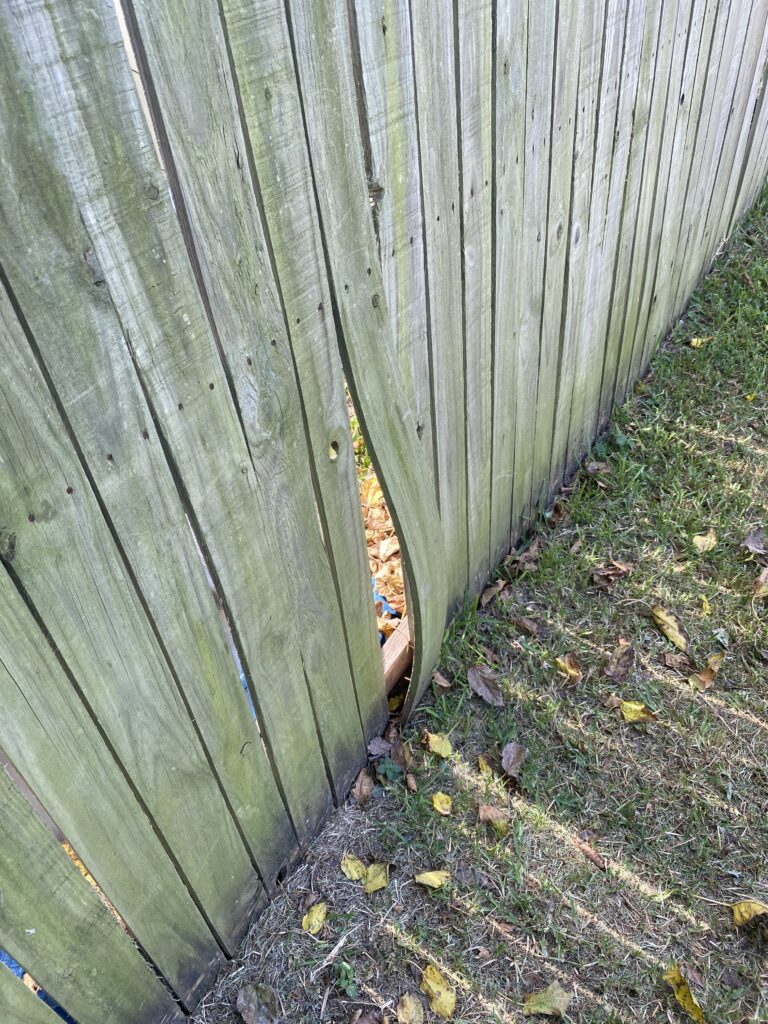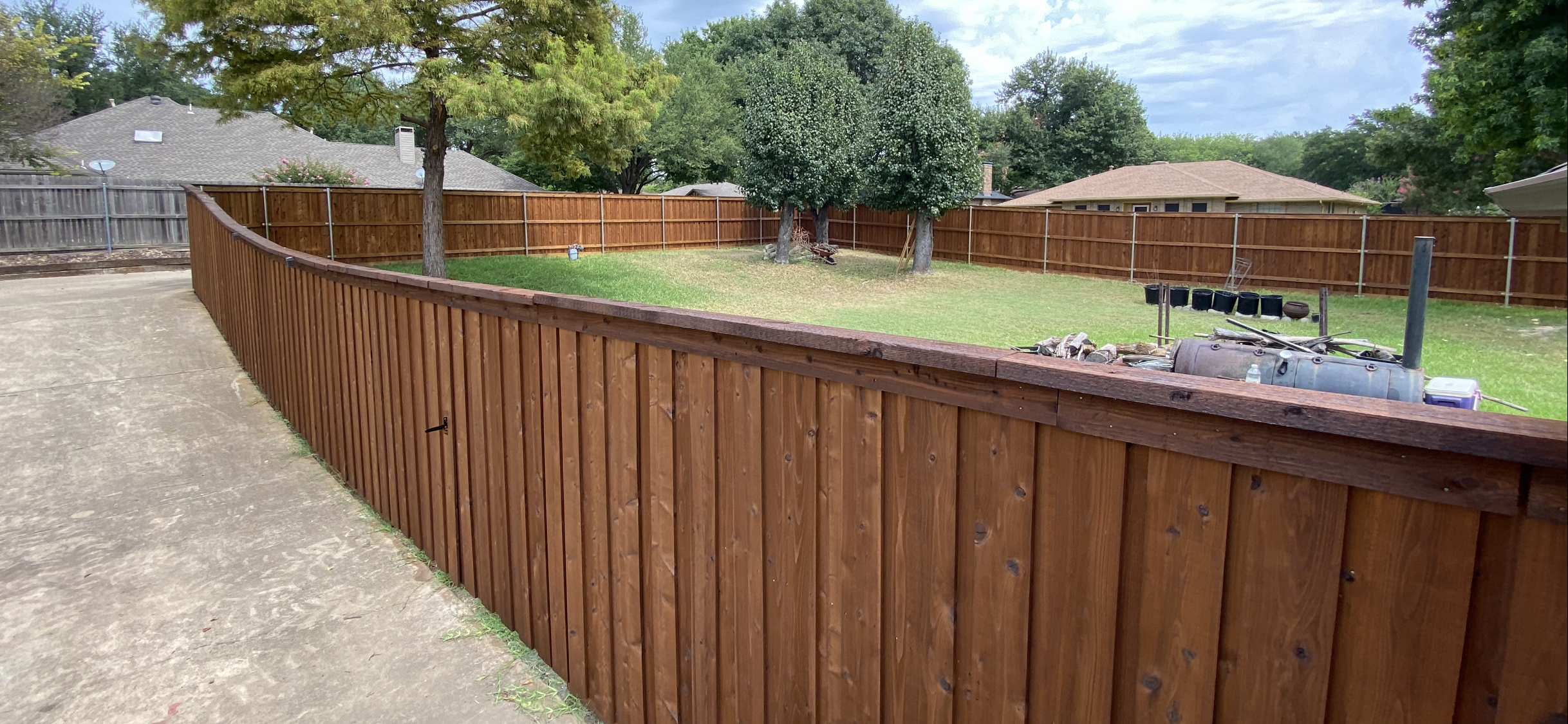Thinking about installing a wood fence is hard enough, especially when you have to think about style, treatment, color, and how long it will last. Hopefully longer than the weather permits. A good-looking fence does more than mark your property line—it boosts your curb appeal, adds privacy, and keeps the pups or kiddos safe. But here’s the thing: not all wood is created equal.
If you’re feeling overwhelmed trying to figure out which type of wood is best for your fence, don’t worry—we’ve got your back. At M&C Fence DFW, we’ve built hundreds of fences across the Dallas-Fort Worth area, specializing in Arlington, and we know exactly what works in our hot, humid Texas climate (and what doesn’t).
So let’s walk through the key things to consider, compare some popular wood options (Cedar vs Pine is a big one), talk treatments, and break down how to spot quality wood before your fence goes up.
1. Important Factors to Consider When Choosing Wood for Your Fence
Before we even talk wood types, let’s look at the big picture. Picking the right wood starts with a few basic—but super important—factors:
Arlington Weather & Climate
Let’s face it, Texas isn’t gentle on fences. Our hot summers, humidity, icy winters (who’da thought?), and huge lightning storms can do a number on untreated or poor-quality wood. You’ll want a wood type that can handle:
- Extreme heat & sun exposure
- Humidity & moisture (hello, mildew!)
- Occasional ice storms in winter
- Windy conditions (especially in open suburban areas)
That’s why rot resistance, warping resistance, and the ability to hold stain well are non-negotiables around here.
Insect Resistance
Arlington has its fair share of termites and wood-loving bugs. If your fence isn’t naturally bug-resistant (like Cedar or Cypress), it needs to be treated for protection. Otherwise, you’re just building a buffet for pests.
Maintenance Level
Be honest with yourself, do you want a fence that’s more “set it and forget it,” or are you okay with some occasional upkeep like staining and sealing? Some woods need more TLC than others.
Budget
Spending a small fortune on a fence is not something everyone can or wants to do. If you’re looking for something that looks great but doesn’t break the bank, there are plenty of options, and we are the experts who can tell you which one and why.
HOA Rules & City Codes
If you live in the area, neighborhoods with an HOA, check if they have restrictions on fence height, color, or wood type. Same goes for city codes if you’re near a historic district or alleyway.
2. Cedar vs Pine: The Most Common Wood Fence Question We Get
If we had a dollar for every time a customer asked, “Should I go with Cedar or Pine?” we’d be giving out free fences. But it is a legit question, and we need to cover this.
Cedar Fences: The Gold Standard in DFW
Cedar is hands-down one of the best wood options for fences in Arlington. If you live anywhere in the DFW area, then you need Western Red Cedar or Japanese Cedar. These are both naturally resistant to rot and insects, which we all know are bigger here in Texas.
Pros:
- Naturally bug- and rot-resistant
- Handles humidity well
- Holds up in the sun (with proper staining)
- Smells great and looks beautiful with its reddish hue
- Lasts up to 25–30 years if you are caring for them properly
Cons:
- Higher upfront cost
- Will gray over time if not stained
- Slightly softer than hardwoods (can dent with heavy impact)
Our Take:
Cedar is the most popular choice for a reason. It’s perfect for Texas weather, and it doesn’t warp or twist as easily as pressure-treated pine. So if you’re staying in your home for a while, it’s a solid long-term investment.

Pine Fences: A Budget-Friendly Option (But with Tradeoffs)
Pine is a softwood that needs to be pressure-treated before it can hold up outdoors, but it’s a solid pick for fence rails. It’s cheaper than cedar, which makes it a budget-friendly option, but it does need a little extra TLC to stand up to the hot, humid Texas weather.
Pros:
- Cheaper upfront cost
- Easy to paint or stain
- Widely available
Cons:
- Prone to warping, cracking, and rotting without treatment
- Needs regular maintenance (especially in this heat)
- Shorter lifespan, typically 10–15 years, even with treatment
Our Take:
Pressure-treated Pine can work, especially if you’re planning to sell your house soon and just need something that looks good for a few years. But if you’re in your forever home, go with the better investment of Cedar or Cypress.
3. Types of Wood Treatments That Make Your Fence Last Longer
No matter what wood you choose, proper treatment is a game-changer, and several factors contribute to this.
Pressure-Treated Wood
This process involves forcing preservatives deep into the wood to prevent rot, insects, and decay. Most pressure-treated fences in Arlington are made from Southern Yellow Pine.
- Great for: Budget builds
- Downside: Can warp if not dried correctly before installation (luckily, you’ll have us!)
- Pro Tip: Avoid pressure-treated pickets (SPF) if you want a smooth, lasting look. They tend to split in our heat.
Stain & Seal
Staining your fence is one of the best ways to extend its life. A quality oil-based stain (like Wood Defender, which we use at M&C Fence DFW) gives you:
- Waterproof protection
- UV resistance (goodbye sun bleaching!)
- Mildew and mold resistance
- Better color retention
We use pre-stained (dipped pickets) before installation for even, deep coverage. No spraying shortcuts.
Water Repellents & Sealants
If you want to keep a natural wood look, clear sealers are a great option, but they require reapplication every couple of years in the Texas sun.
And if you’re wondering whether regular maintenance is really worth it, we have proof from one of our recent customers.


We had a customer in Arlington with a cedar fence we built 25 years ago. Same fence. He’s re-stained and treated it every three years like clockwork, just like you’re supposed to. And you wouldn’t believe how good it still looks. It could pass for brand new. That’s the power of choosing the right wood and staying on top of maintenance.
4. Pros and Cons of Pressure-Treated Wood Fencing
Pressure-treated wood gets a lot of attention because it’s affordable and accessible. But is it worth it for your fence?
Pros:
- Very affordable
- Readily available at most lumberyards
- Treated for bugs and moisture
- Can be stained to look like higher-end woods
Cons:
- Prone to warping, shrinking, or cracking in Texas heat
- Not as attractive without a stain
- May not last as long as Cedar or Cypress
Our Verdict:
Pressure-treated Pine is fine for budget builds or short-term solutions, but we don’t recommend it for your long-term dream fence, especially not for pickets.
5. How to Spot Quality Wood for Fencing
Not all fence wood is equal. Even if it’s labeled the same. There are ways to tell if you’re getting the good stuff, though, and this is really where the pros (us) come into play.
Works well for rail system, no for pickets, and as a fence it will pull away and curl.
Check for Straightness
Warped or bowed boards will only get worse once installed, especially under the Texas baking sun. Always go with straight pickets and posts.
Look at the Grain
Tight, straight grain is a sign of stronger wood. Fewer knots mean less chance of breakage or splitting later.
Grade Matters
Select or Premium grade woods are better than Construction or Utility grade. They cost more but save you money over time in repairs and replacements.
Moisture Content
Wood that’s too wet will warp once it dries. At M&C Fence DFW, we check the moisture content before staining to make sure it’s perfect for absorption and durability.
So What’s The Verdict?
If you live in DFW and want a fence that looks great, stands up to the heat, and lasts for years, you have options!
- Best All-Around: Cedar (Western Red or Japanese)
- Best for Budget: Pressure-Treated Pine (with caution)
- Best for Humidity & Bugs: Cypress
- Most Durable Hardwood Option: Oak (if treated properly)
- Best Look for Modern Builds: Horizontal Douglas Fir or Cedar
And remember, no matter which wood you go with, staining and sealing it properly is the key to a long-lasting fence.
Get a Custom Wood Fence That’s Built to Last in DFW
At M&C Fence DFW, we don’t believe in cookie-cutter fences. Every fence we build is custom-cut to your yard, your slope, and your style. Whether you’re looking for a horizontal wood fence, a board-on-board privacy fence, or a classic picket fence, we’ve got you covered.
We proudly serve Arlington, Grand Prairie, Mansfield, and the greater Dallas-Fort Worth area with professional wood fence installation and high-quality craftsmanship.
With a free quote and free conversation, we look forward to talking soon and creating a fence you’ll want to sit on your back porch and stare at!


